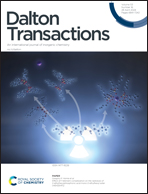A carbon quantum dot-decorated g-C3N4 composite as a sulfur hosting material for lithium–sulfur batteries
Abstract
Although lithium–sulfur (Li–S) batteries have attracted strong consideration regarding their fundamental mechanism and energy applications, the inferior cycling performance and low reaction rate caused by the “shuttling effect” and the sluggish reaction kinetics of lithium polysulfides (LiPSs) impede their practical application. In this work, graphitic C3N4 (g-C3N4) assembled with highly-dispersed nitrogen-containing carbon quantum dots (CQDs) is designed as a cooperative catalyst to accelerate the reaction kinetics of LiPS conversion, the precipitation of Li2S during discharging, and insoluble Li2S decomposition during the charging process. Meanwhile, the introduction of CQDs improves the conductivity of the g-C3N4 substrate, showing great significance for the construction of high-performance electrocatalysts. As a result, the as-obtained composite shows efficient adsorption and electrochemical conversion of LiPSs, and the Li–S batteries assembled with CQDs/g-C3N4 exhibit an initial specific capacity of 1300.0 mA h g−1 at the current density of 0.1C and retain 582.3 mA h g−1 after 200 cycles. The electrode with the modified composite displays a greater capacity contribution of Li2S precipitation (175.7 mA h g−1), indicating an enhanced catalytic activity of g-C3N4 decorated by CQDs. The rational design of CQDs/g-C3N4 as a sulfur host could be an effective strategy for developing high performance Li–S batteries.



 Please wait while we load your content...
Please wait while we load your content...